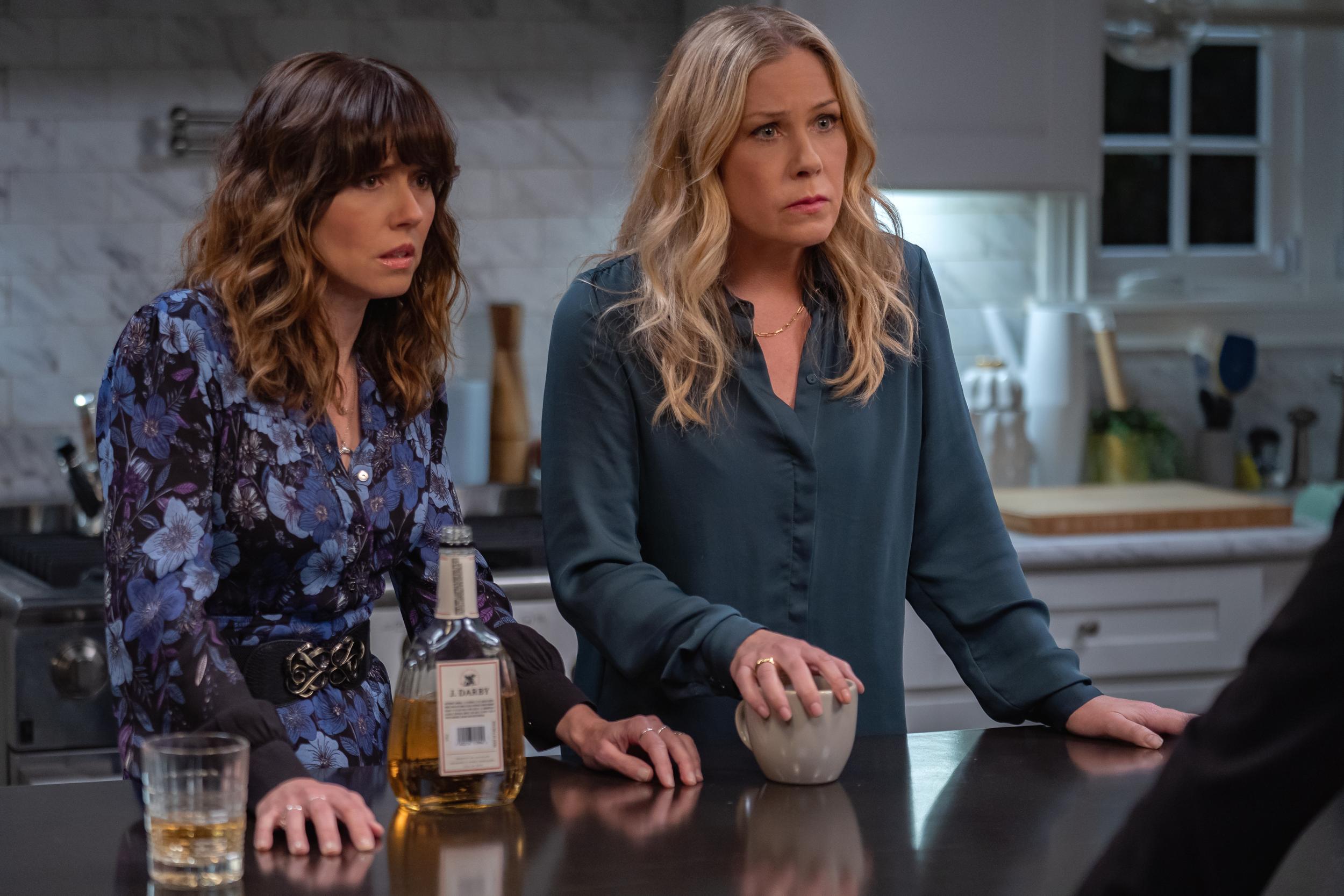For all its absurdity, Netflix’s Dead to Me captures the grief, anger and sadness of losing a partner
The first season ended with a cliffhanger – did Jen kill Steve or not? But what is most poignant about the second season is not who killed him, but how well the show deals with grief, writes Charlotte Cripps


Your support helps us to tell the story
From reproductive rights to climate change to Big Tech, The Independent is on the ground when the story is developing. Whether it's investigating the financials of Elon Musk's pro-Trump PAC or producing our latest documentary, 'The A Word', which shines a light on the American women fighting for reproductive rights, we know how important it is to parse out the facts from the messaging.
At such a critical moment in US history, we need reporters on the ground. Your donation allows us to keep sending journalists to speak to both sides of the story.
The Independent is trusted by Americans across the entire political spectrum. And unlike many other quality news outlets, we choose not to lock Americans out of our reporting and analysis with paywalls. We believe quality journalism should be available to everyone, paid for by those who can afford it.
Your support makes all the difference.In the new season of Netflix’s Dead to Me, Linda Cardellini’s Judy snuggles up to a large freezer, inside which is the body of her murdered ex-fiancé. It is a strangely tender moment. “I can’t sleep and I don’t think Steve can either,” she tells her best friend Jen (Christina Applegate), who discovers her in the middle of the night “keeping Steve company”.
Of course, Dead to Me – just like Ricky Gervais’s After Life, another recent Netflix show to tackle grief – is a good old black comedy. Starring Applegate as a grieving widow contending with a barrage of sympathy lasagnes after her husband Ted was killed in a hit-and-run, the show descended into chaos in its first season. After discovering that her closest confidante, Judy, was responsible for Ted’s death, Jen shot dead Judy’s scheming fiancé. Now, as the show returns for its second run, there are two grieving widows.
But for all its absurdity, there is something alarmingly real about the way the show captures grief. For any of us who have lost a loved one – particularly a partner, as I did in 2014 – it strikes a chord. I might not have had my dead partner on ice, but I did keep hugging the box containing his ashes, full of crazy thoughts about where he would be happiest on my bookcase before we scattered them. Like Judy, who thinks it’s a sign when the light goes on by itself – that it’s Steve’s spirit communicating that he doesn’t want to be in the freezer – I too felt like my partner might be in touch when a few days after his death, the lights on the bathroom mirror flicked on and off. The survivor’s guilt and the continual loop of grief, anger, and sadness that the characters go through – I remember all that only too well.
It’s quite clear that the person who has written it – Liz Feldman – is familiar with loss. Those who have lost partners know what it's like to cry into your pillow, wear their clothes, and want to stay up and talk about them all night like Jen and Judy do. If you take out the comedy from Dead to Me, you are left with a heart-wrenching account of grief.

Gervais’s After Life – a runaway hit about a man’s depression and suicidal thoughts after the death of his wife – also hits a nerve. The second season may be a rehash of the first, but its portrayal of grief through Tony (Gervais), a features editor at the Tambury Gazette, is still painfully real and strikingly sincere. Gervais's relationship with his dog felt particularly pertinent to me; my golden retriever Muggles was my closest pal after my partner died, and slept with me, just as Tony's does.
There are holes to be picked in it. Paul Kaye’s ridiculously inappropriate therapist gives advice that is too far-fetched to be believable. “I hate namby-pamby nonsense,” he tells Tony’s brother-in-law Matt (Tom Basden), who is dealing with a marriage break-up in season two. “This bleeding hearts, ‘Ooh, toxic masculinity, it’s OK to cry’... It’s also fine to have five pints, drop an E and do some trollop from behind against the bins.”
Still, as one of Netflix’s most popular shows, After Life must be doing something right. As with Dead to Me, it captures the madness and vulnerability of grief and makes even the most painful events funny. Sometimes, that's even better than grief counselling. Much cheaper, too.
Dead to Me season two is on Netflix from Friday
Join our commenting forum
Join thought-provoking conversations, follow other Independent readers and see their replies
Comments